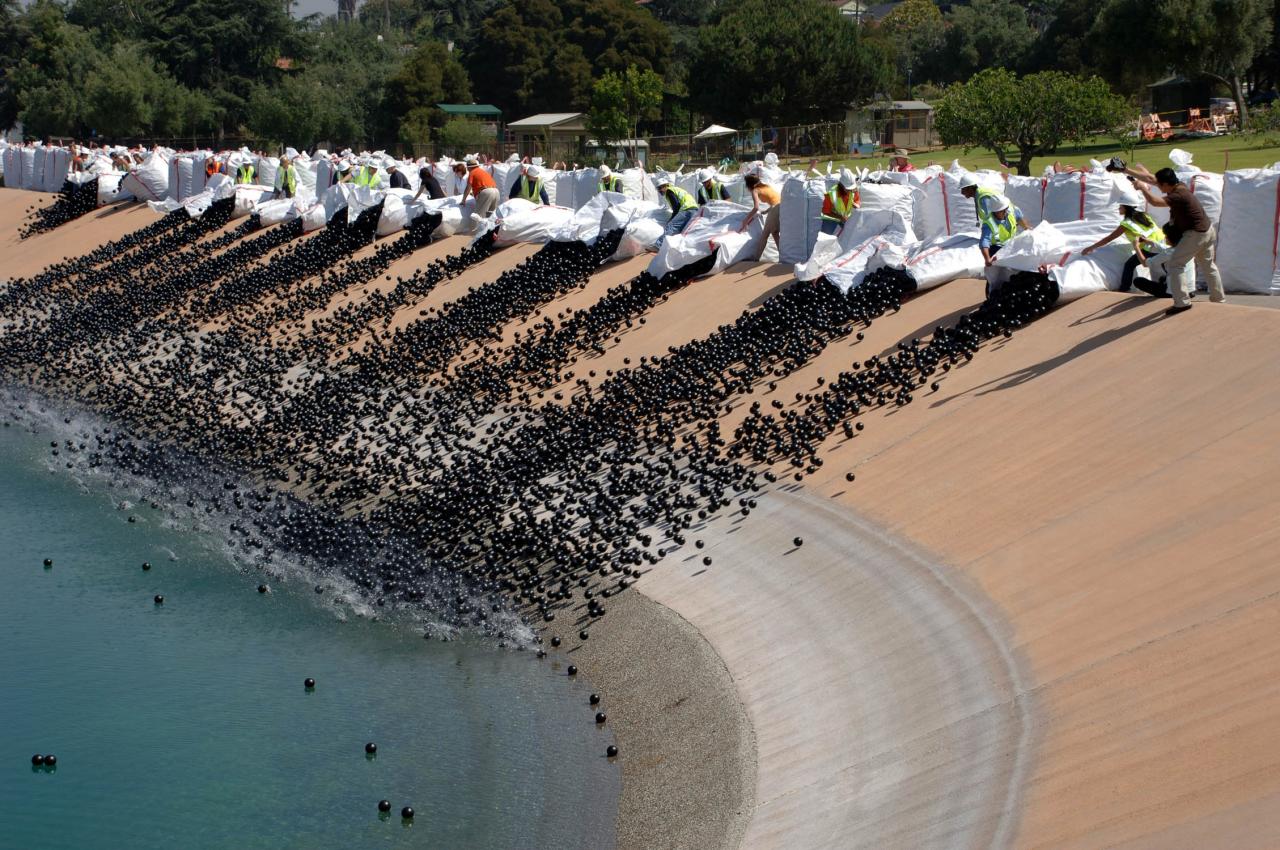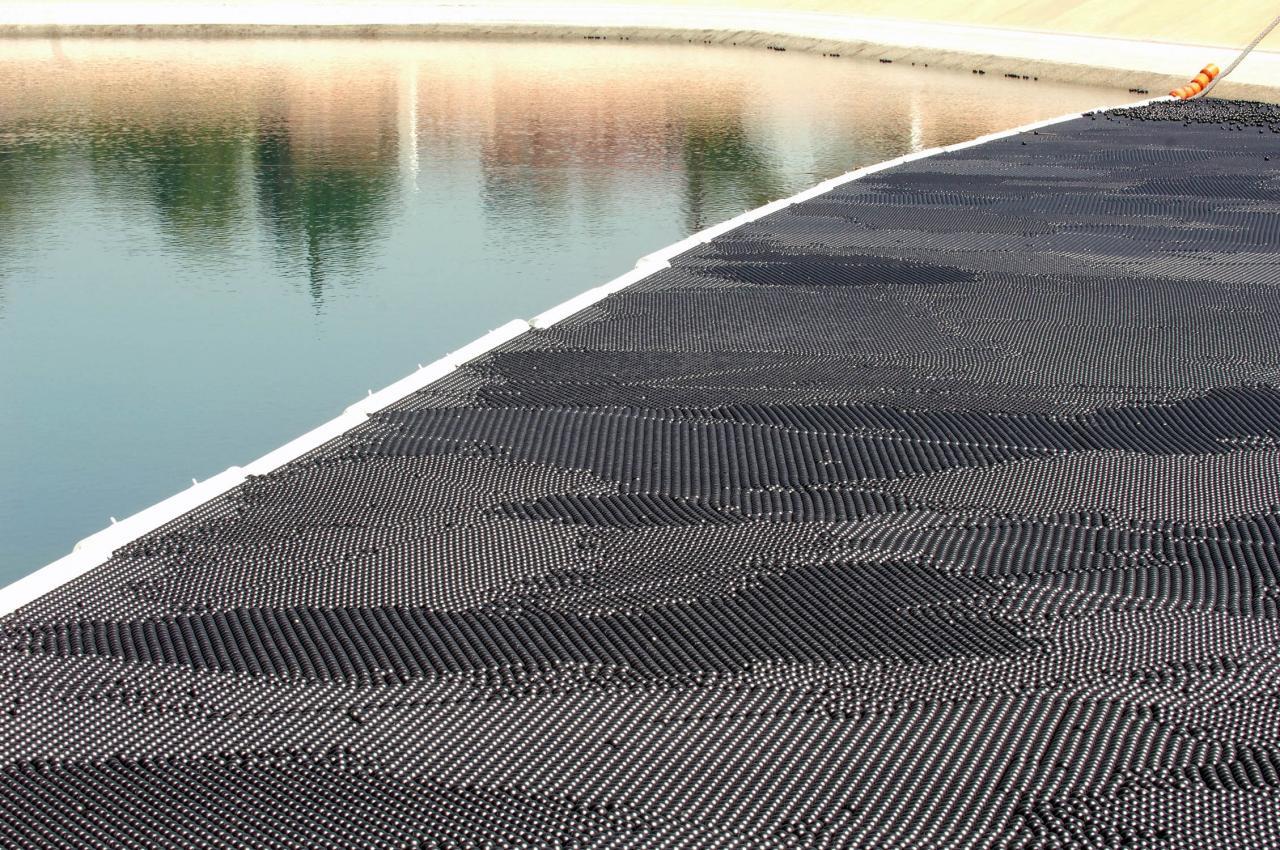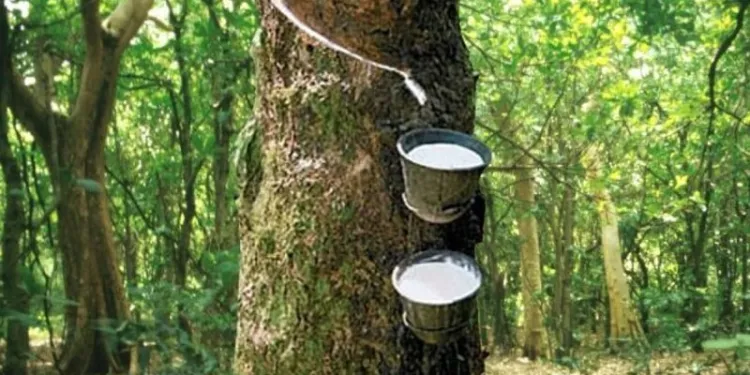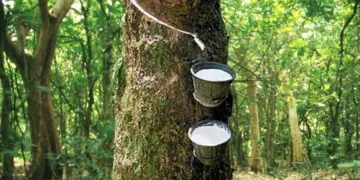January 15, 2016 Updated 1/15/2016
Email Print

Los Angeles Department of Water and Power Shade balls are dumped into the Ivanhoe Reservoir in 2015. Los Angeles will be removing the balls from all but its biggest reservoir to keep up with federal requirements.
Five months after Los Angeles officials exclaimed “shade balls away” as they ceremoniously sent 96 million plastic orbs rolling into a reservoir, the four-inch pieces of high density polyethylene will be taken out of three of the four reservoirs where they have been used.
Federal rules call for all drinking water that is open to the air to be covered to prevent sunlight from triggering unhealthy chemical reactions with chlorine and to keep out rain, dust and birds. Shade balls will continue doing the job at the massive Los Angeles Reservoir, which also has a secondary ultra-violet treatment process to disinfect the water.
However, the shade balls will be removed from the other reservoirs. One reservoir is being taken out of service and the other two will get non-permeable floating covers because they do not have a back-up UV treatment process.
The LA Reservoir has a 175-acre surface and it would have been cost prohibitive to blanket it, Ellen Cheng, a spokeswoman for the Los Angeles Department of Water and Power, said in a telephone interview. In that case, the shade balls, which cost about $ 34.5 million, represented a savings of about $ 250 million.
“We’re very happy with the shade balls for their cost and effectiveness for our large reservoir but for the smaller ones — because of the regulation about open reservoirs — we’re continuing to comply by making sure that in places where we can have a non-permeable cover that we do that,” Cheng said.
Open-air reservoirs for drinking water have to be covered to stop a potentially dangerous chemical reaction between bromide, which occurs naturally in groundwater, and chlorine, which is used as a disinfectant. Sunlight turns the mix of bromide and chlorine into bromate, which is a suspected carcinogen.
L.A. a shade ball pioneer

Los Angeles Department of Water and Power Shade balls on the surface of the Ivanhoe Reservoir.
LADWP is the nation’s largest public utility with 4 million customers and many reservoirs. A fifth reservoir that has a plastic floating cover also is scheduled to get a new one, Cheng said.
That reservoir has a synthetic rubber cover — made of chlorosulfonated polyethylene — but Cheng does not know if the same material will be used on the two small reservoirs where the shade balls will be removed.
LADWP is the first utility to use shade balls, also called “conservation balls” and “bird balls,” to protect water quality. Common applications include minimizing bird strikes near airport runways, where birds often gather at storm-water collection basins, and preventing water evaporation at ski resorts and mining operations.
Even though LA is removing millions of shade balls from its reservoirs, the owner of one business that manufactures the food-grade spheres is not disheartened. Sydney Chase, owner of Xavier LLC in Glendora, Calif., said some of the shade balls were deployed as tests in 2008 and they are nearing the end of their 10-year service life.
“It’s not a big deal,” Chase said in a telephone interview. “What they are removing are the test balls from eight years ago. When they first started the project they ran balls that weren’t ballasted — meaning there is no water in them. As the project progressed they ended up being ballasted to keep them in place.”
After the video of shade balls being deployed at the LA Reservoir went viral in August, Chase said sales inquiries increased.
“Shade balls are still a solution,” she said. “We’re getting attention from all over the world, mainly from governments. It’s definitely a viable product. They have been proven over time.”
In addition to blocking sunlight, shade balls reduce water evaporation and algae growth. The 96 million plastic balls covering the LA Reservoir are expected to prevent the evaporation of about 300 million gallons of water a year.
Next up: recycling shade balls
At the other three reservoirs, LA will be removing and recycling about 9.4 million shade balls.
Richard Harasick, LADWP’s director of water operations, told Governing magazine that he has been fielding a lot of calls from other jurisdictions about using shade balls in drinking water reservoirs.
“However, LADPW has a special set of water quality issues that fit the use of shade balls likely not seen by other water utilities,” Harasick told the magazine for a December article.



























